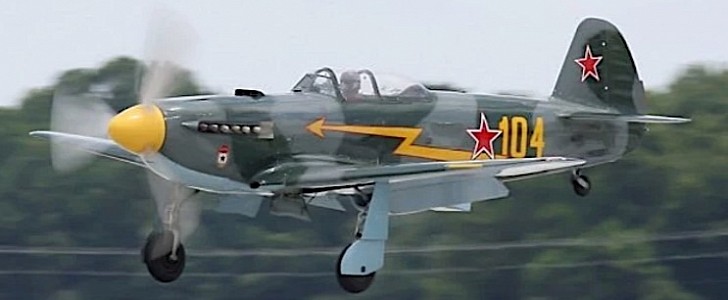There were never bigger enemies in the history of the world than the U.S. and the Soviet Union. The two nations held knives at each others’ throats for decades, and came to the brink of war on several occasions. Yet, somehow, clearer minds prevailed, and the world was spared a military confrontation that would have probably brought about the end of civilization.
Because the two never actually faced each other directly, average Americans, save for what they learn from movies and such, are pretty clueless when it comes to the Russians’ military prowess. Yet at air shows across the nation people are exposed to foreign military technology, oftentimes resulting in sighs of admiration.
There is quite the number of Russian World War II airplanes taking to American skies. Sure, they come from a time when the country’s biggest enemy was not Russia, but Germany, yet they sure are a taste of what could have been.
It’s the Yaks we’re talking about, the successors of the Yakovlev Yak-9s introduced in 1942 to play a crucial role in the offensive against the Nazis, and actively doing so in the battles of Smolensk (1943) and Kursk (1943), for example.
The Yak-9 was a single-engine, single-seat fighter fitted with a 20 mm cannon and a 12.7 mm machine gun that successfully took on the German Focke-Wulf Fw 190 and Messerschmitt Bf 109. During the war, some 17,000 in various configurations were made and deployed by Russia, China, North Korea, and Yugoslavia.
Yakovlev stopped making the Yak-9 in 1948, but for some reason replicas started being made by the factory in the 1990s, using original equipment from the war, and Allison V-1710 engines.
The one we have here is one of those late replicas, made in 1997. It was flown at shows across the U.S. (the plane has its home base in Delaware) wrapped in WWII Russian two-tone grey camouflage. And now it’s on the lookout for another pilot with a passion for Russian military hardware, selling for $695,000.
There is quite the number of Russian World War II airplanes taking to American skies. Sure, they come from a time when the country’s biggest enemy was not Russia, but Germany, yet they sure are a taste of what could have been.
It’s the Yaks we’re talking about, the successors of the Yakovlev Yak-9s introduced in 1942 to play a crucial role in the offensive against the Nazis, and actively doing so in the battles of Smolensk (1943) and Kursk (1943), for example.
The Yak-9 was a single-engine, single-seat fighter fitted with a 20 mm cannon and a 12.7 mm machine gun that successfully took on the German Focke-Wulf Fw 190 and Messerschmitt Bf 109. During the war, some 17,000 in various configurations were made and deployed by Russia, China, North Korea, and Yugoslavia.
Yakovlev stopped making the Yak-9 in 1948, but for some reason replicas started being made by the factory in the 1990s, using original equipment from the war, and Allison V-1710 engines.
The one we have here is one of those late replicas, made in 1997. It was flown at shows across the U.S. (the plane has its home base in Delaware) wrapped in WWII Russian two-tone grey camouflage. And now it’s on the lookout for another pilot with a passion for Russian military hardware, selling for $695,000.

